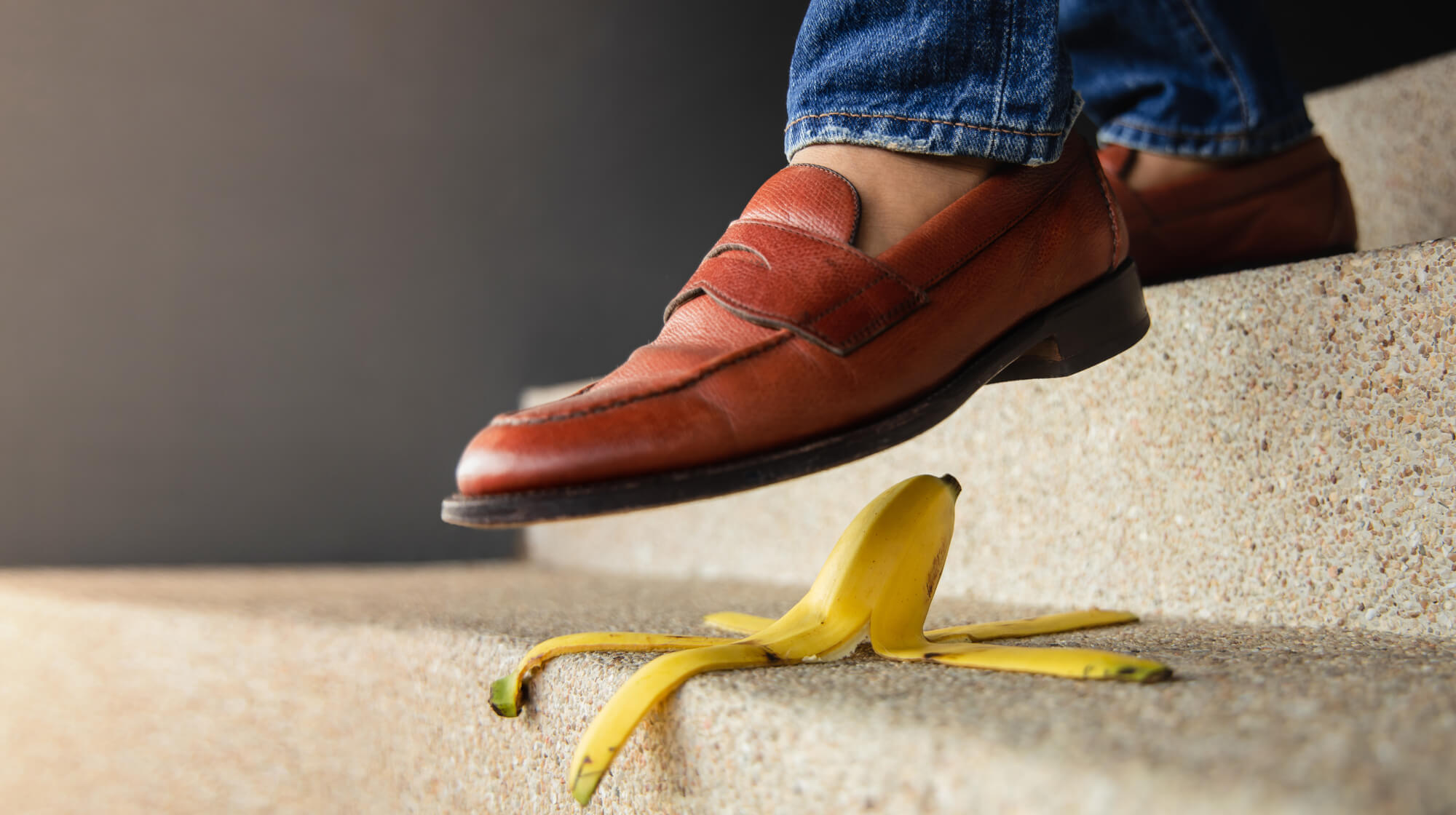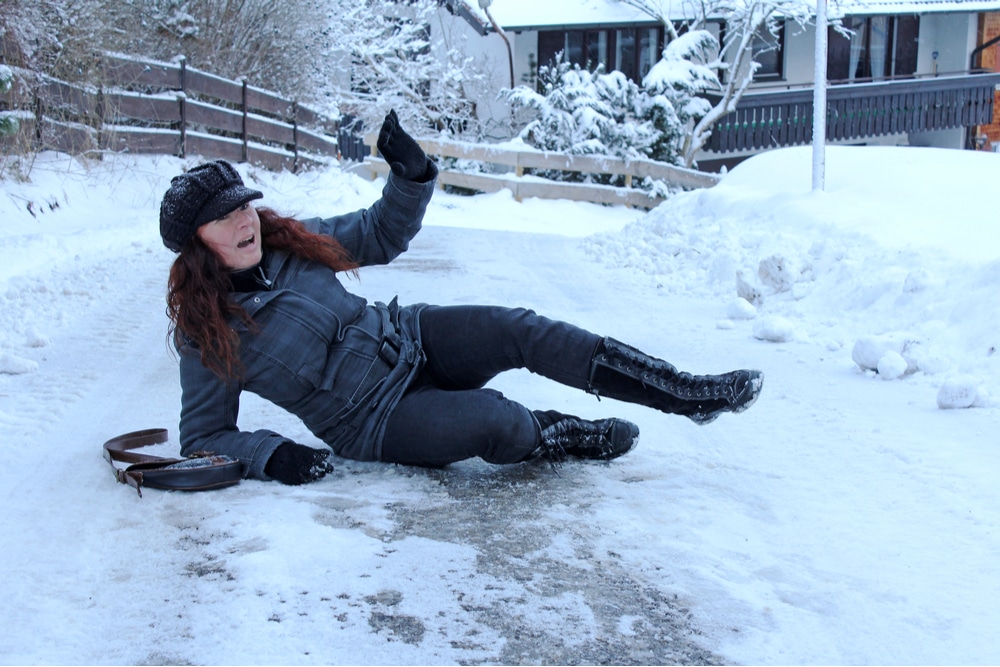Slip & Fall Accident Cases In Illinois, Wisconsin, & Kentucky
Good afternoon, I am Keith Shindler coming to you for another edition of personal injury and Facebook Live, this one will cover slip & fall accidents. I do these sessions to try and bring to the community information about how you can help yourself recover damages and perfect your personal injury case. We welcome positive comments and questions. You can always call us at Claim Your Justice at 847-434-3555.
In our first episode, we discussed who pays for costs when a client is pursuing a personal injury case. In the second episode, we discuss what to do in the event of a car accident. In the third episode, we discussed chain reaction types of accidents.
Slip & Fall Accidents Are Common
Today I want to discuss slip & fall and trip and fall cases. Very basic, right? Someone is walking, they slip, fall, and injure themselves, or someone is walking, and trip and they fall and injure themselves. With the winter here, slip & fall accidents are prevalent. Even without the weather conditions, it could happen in a store. It could happen in a parking lot. It can occur when walking from a parking lot into a store.
This past week alone, I received three calls regarding slip & fall accidents. The first call was from a woman who fell at the Greyhound station in downtown Chicago. She had a severe injury where she broke her foot and required surgery. Another person tripped outside of the hospital. She fractured her hip and required surgery. Another prospective client slipped on ice coming out of the apartment building and fractured their leg.
Pictures Are Crucial To A Slip & Fall Accident Case
As you can see, these types of accidents frequently lead to severe injuries. If the victim properly documents and constructs the incident’s scene, the cases can succeed. However, the common element of the three cases that I just mentioned is that they had no pictures. Why do we need pictures? I’ll get to that in a second.
When I ask a person if they had pictures of an incident where they tripped and fell or slipped and fell, and they say no, I find it a little bit unusual because in our everyday lives if someone sees a fight, what’s the first thing they do? They whip out their phone. If someone sees a car accident, what’s the first thing they do? They whip out their phone. If someone sees anything that may be newsworthy or interesting to them from a social media perspective, they’re all over their phones.
They don’t even think of it when something happens personally, such as these three callers. I understand they were injured. They were in pain and needed help. But the fact of the matter is if you don’t get a picture of the area where you fell, send a family member back to get photos at the time of the fall. Or ask someone at the hospital, ask the ambulance driver. It’s a critically important part of building the case.
I, as your attorney, need to establish that there was some defective condition that the property owner or the company that takes care of the maintenance of the building did not properly address, and therefore it caused you to fall. It’s challenging and sometimes impossible for me to file a slip & fall lawsuit without this kind of evidence. Let’s look at the Greyhound station case. I go after the Greyhound station. I said my client fell in your facility. The first question is, where did they fall? Well, my client doesn’t have an exact location. She said it was on my way to the bathroom. Look at the other case, a person trips coming out of a hospital. There could be sidewalks that aren’t properly maintained. There could be sidewalks under construction, and there’s no proper signage—or cordoning off the construction site.
Those are all beneficial things that could help support a case, but I’m helpless without a picture. If it’s ice, those are complex cases. However, if there was what’s called in the law an ‘unnatural accumulation of ice, it helps me. I can help you recover substantial money with the correct facts.
In any personal injury case, you need a duty, a breach of the duty, a proximate cause, and damages. We’ll discuss duty and breach of duty in a later session. Damages are easy to understand. Someone’s injured, they fracture a bone, and they have surgery. Those are damages. Proximate cause. In law school, they taught us it’s called the “but for.”
But if the property owner had not properly maintained their property, this person would not have been injured. But for the company in charge of maintenance, the person wouldn’t have been injured. But the person wouldn’t have been injured if the construction company’s negligence in taking care of a repair job on a particular site. It’s called proximate cause. It’s a substantial element, a necessary element of a personal injury case.
How do we prove “but for”? Pictures, pictures, pictures. I had a recent case, we discussed it with you at the end of January, and I’ll touch on it again today. Our client was walking on a city street on a sidewalk that had something that’s called an uneven slabbing. So you have one high slab, another slab that is sunken down low. If they’re very close, it’s difficult to maintain a case, and this was not very close.
The client fell and fractured her wrist. She had surgery, and she called us right away. The first perfect thing they did was to help us represent them properly. In the case they talked to me, I said, please get someone out there to take pictures, they sent a relative out, took pictures, and we were able to establish the depth of difference, which was approximately three and a half inches. The images helped me confirm that “but for” the negligence in maintaining that particular sidewalk, the person would not have fallen.
I don’t mean to be redundant. I apologize if you think you’ve heard this five times already in the eight minutes we talked. It’s necessary. Once you get pictures, I can use those pictures to establish where the accident happened, how the accident happened, etc.
Sometimes, if a facility has security cameras, those security cameras’ videos could have captured the actual fall. It’s hard to get video. If it’s a neighbor’s video from like a Ring doorbell, it may be possible. If it’s a video from the person who’s maintaining the store, the house, or the other type of structure, they’re never going to turn it over voluntarily. I can get through litigation to discovery. But it’s difficult to put together a case that way.
On the issue of a Ring Doorbell, we can go around to the houses that may be around the incident scene. Everyone seems to have a ring doorbell or other type of doorbell that records these things. We take the time to knock on the door of those houses or other businesses and say, “Hey, can we get a copy of the video? If I get the video, I can help you.
Call Slip & Fall Attorney Keith Schindler Now
So let’s sum it up. I know you’re injured. I know people can get seriously injured in these trips and falls. My sister-in-law was very seriously injured, and it’s critical to take the pictures, please. Remember if you’re injured in a slip & fall accident, car accident, trip, fall, medical malpractice, or wrongful death. Let Claim Your Justice help you. Call 847-434-3555. We’re here to help you. Thank you. This has been Keith Shindler. Have a successful rest of your week.


